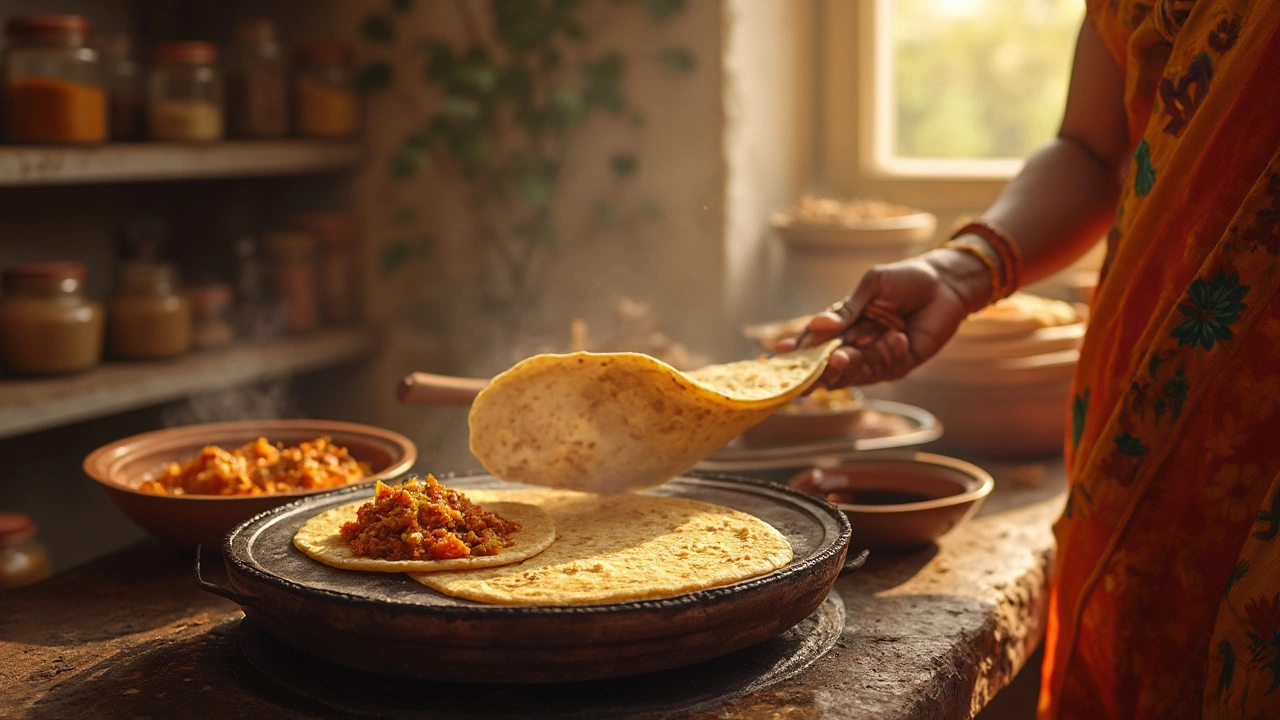Calorie Processing in Indian Cooking
When it comes to Calorie Processing, the way our bodies handle the calories in food, from digestion to storage. Also known as calorie management, it plays a huge role in everything from weight control to daily energy levels. Understanding this process helps you decide which Indian dishes fit your health goals and why some recipes feel lighter than others.
One of the biggest players in calorie processing is Metabolism, the set of chemical reactions that turn food into fuel. A faster metabolic rate means you burn more calories at rest, while a slower rate can make even modest portions add up. Indian cuisine offers natural ways to boost metabolism – think spices like turmeric, cumin, and chili that can raise body temperature and stimulate fat oxidation. Pair those spices with protein‑rich foods such as paneer or lentils, and you give your metabolism a double‑hit: heat‑inducing compounds plus building blocks for muscle, which burns more calories than fat.
Macronutrients and Their Impact on Energy Balance
Another core entity in calorie processing is Macronutrients, the three fuel sources – carbohydrates, proteins, and fats – that provide the calories we need each day. Carbs from rice or roti are quick‑acting, giving you immediate energy, but they can also spike blood sugar if you overdo them. Protein from dal, chickpeas, or tofu steadies that rise and helps keep you full longer, which often means you eat fewer calories overall. Healthy fats from ghee, coconut oil, or nuts are dense in calories, yet they support hormone balance and satiety when used in moderation. By balancing these macronutrients in each meal, you control how many calories get stored versus burned.
Indian cuisine is a treasure trove for experimenting with macro ratios. A classic masala dosa, for example, combines fermented rice‑lentil batter (carbs + protein) with a potato filling (carbs) and a side of coconut chutney (healthy fats). Swap the potato for a mix of peas and carrots, and you lower the carb load while bumping up fiber, which slows digestion and smooths calorie release. Biryani, on the other hand, can be heavy on rice but gets lighter when you load it with vegetables, use less oil, and add lean meat or paneer for protein.
Beyond the plate, portion size and cooking technique directly affect calorie processing. Deep‑fried samosas soak up oil, stacking calories fast, while grilling or baking the same filling in a thin pastry cuts that number dramatically. Adding a squeeze of lemon or a splash of vinegar, as you see in our "Why Add Lemon to Biryani?" article, can improve digestion by increasing stomach acidity, which helps break down proteins and carbs more efficiently, leading to better calorie extraction and less waste.
Finally, timing matters. Eating a protein‑rich breakfast like sprouted moong dal chilla sets your metabolism for the day, while a late‑night heavy meal can slow calorie burning as the body prepares for rest. Our guide on "Dal Nutrition Facts" explains which dal varieties deliver the most protein with fewer carbs, ideal for a midday boost that keeps you energized without a calorie crash.
All these pieces – metabolism, macronutrients, spice chemistry, cooking methods, and timing – weave together to shape calorie processing in everyday Indian meals. Below you’ll find a curated list of articles that dive deeper into each aspect, from why roti sometimes refuses to puff to the science behind lemon curdling milk. Explore the tips, tricks, and science‑backed insights to make your kitchen a place where flavor and health go hand in hand.

Understanding How Your Body Processes Calories in Roti
Get the scoop on how your body handles the calories from your daily roti. Discover the calorie content in a single roti, roti with sabzi, and with ghee. Learn how these calorie counts affect your diet and get practical tips on making your roti diet healthier and more balanced. Take control of your nutritional intake with straightforward guidance that's easy to implement.